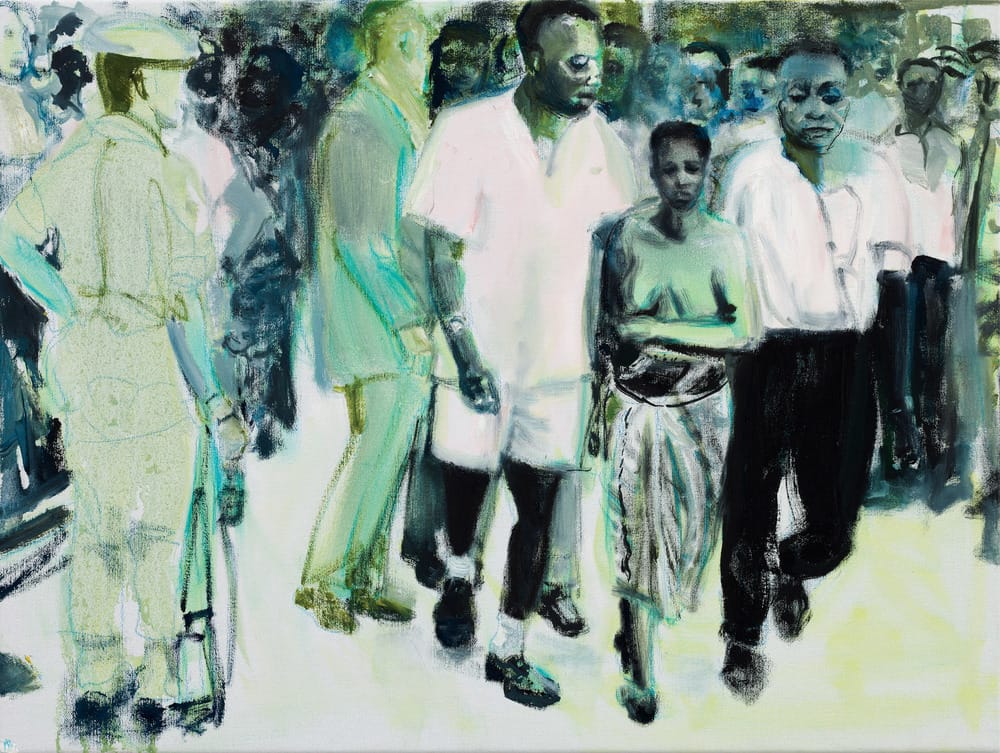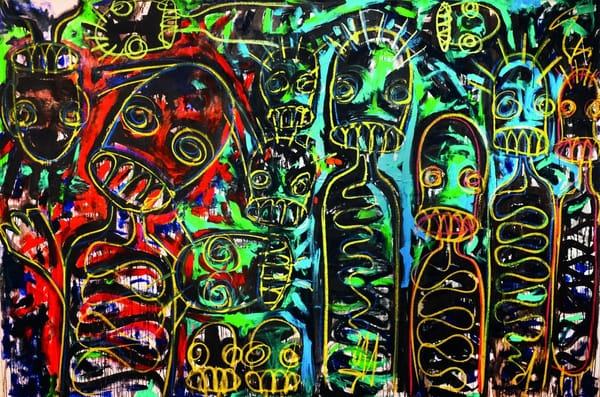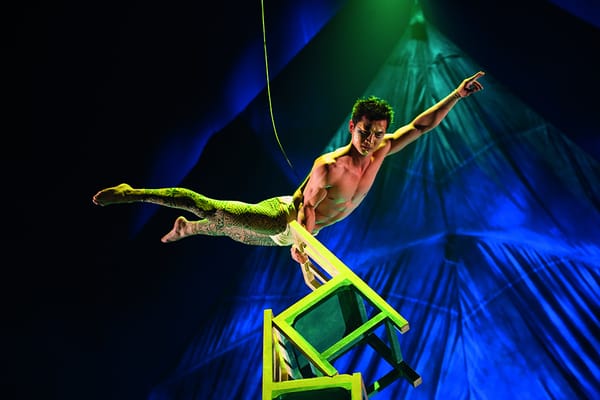Marlene Dumas: The image as triumph
Fred Fyles is amazed by this painter’s long-awaited retrospective

_“Art is not a mirror. _
Art is a translation of that which you do not know”
– Marlene Dumas
The earliest piece of figurative art in the world, the Venus of Hohle Fels dates from 40,000 years ago. In the years between then and now we have had Ingres’ bathers, Delecroix’s Liberty, and Moore’s voluptuous granite blocks; surely there is no angle left from which the human body has not been explored and depicted. The Tate Modern’s latest exhibition, Marlene Dumas: The Image as Burden, shatters this idea, as Dumas’ provocative, revolutionary portraits return the human figure to the centre of art.
Using photographs as her primary image, Dumas explores the very limits of the human form; in her Rejects series, comprised of cast-offs from some of her earlier works, human faces seem made up of mere smoke. Nebulous and sinister, this ongoing series of 48 portraits assaults you with their intensity. Her first portraits, completed in 1975 whilst studying in her native South Africa, already display this signature style; they see portraiture as a form of emotional exorcism, a purging of raw emotions, resulting in a psychologically complex body of work comparable to Francis Bacon.
Death stalks through the galleries here, emerging from many of Dumas’ works; in some, such as the portraits of dead women, death is immediately present, but in others one must scratch beneath the surface, only to see the reaper staring back at you. From her first major show in 1985, The Eyes of the Night Creatures, we are shown a portrait of her late grandmother. Surrounded with a pale blue, the figure seems to dissolve into the background, her benevolent expression offset with a sense of unease at the smudges and drips that cover the painting like ectoplasm. Within Dumas work there is a melding of the sexual and the morbid, calling to mind Freud’s death drive – that desire to return to the inorganic. This is most obvious in the last room of the exhibition; upon entering, the entire right wall is taken up with three closely cropped portraits of women. With their heads thrown back, it is easy to think that they are reclining in St Teresa-esque ecstasy; the description lets us know that Dumas took as her source material pictures of three dead women, a revelation that hits us square in the gut.
Within Dumas’ work there is a melding of the sexual and the morbid
Although Dumas has made Amsterdam her home in the mid-70s, her South African roots have driven her work, which is intrinsically political. By breaking down the tradition of figurative painting, Dumas raises questions about gender, sexuality, and – most importantly – race. The theme of ethnicity is one that occurs again and again in Dumas’ paintings. In the early 1990s she began challenging the tradition of ethnographic photography, which often saw black people as mere bodies instead of people; using these photos as a source material, she restores the subjects’ humanity, subverting the very practice.
Elsewhere, she contrasts black bodies with white, whether this is by simply switching the colour round on paintings of her infant daughter, or in her work The White Disease, which interprets medical photography to directly oppose the Apartheid idea of the ‘Black Problem’. Dumas looks at the line where pain becomes beauty, where horror and delight merge together, in a Dionysian whirlwind of emotion.
Her wide-ranging series Magdalenas, which was included in her collection for the Dutch Pavillion in the 1995 Venice Biennale, takes the female body as a starting point, but veers down a much more interesting path. The entire range of women’s bodies are taken on by Dumas’ gaze – cherubic, Rubenesque nudes, resplendent in their fleshiness; and thin, angular black women, their hair covering their breasts; Dumas knows there is no point in trying to sum up the full range of women’s humanity within a single painting, and so extends her reach so wide as to take on numerous archetypes.
Dumas uses the female form in a variety of ways: in her Delecroix-referencing The Woman of Algiers, she reproduces a newspaper photograph of a Algerian prisoner captured by French forces, including the black bars covering her breasts and genitals; her Biennale piece_ Great Britain_ 1995-7 contrasts two British icons of femininity, Naomi Campbell and Princess Diana, to explore how representation is intrinsically linked to class and race; and in The Widow, Pauline Lumumba bears her breasts in resolute agony as she walks the streets of Leopoldville, mourning her murdered husband. While these women are used to raise questions of politics, their autonomy is not destroyed – they are never seen as tools in Dumas’ arsenal, but living breathing expressions of femininity.
And it is this that is one of the most interesting aspects of Dumas’ work: her obsession with the female form and the historical place of women, but also her refusal to allow this to constrain her. She is not a ‘niche’ painter; not a ‘woman’ painter; she is simply a painter of humanity, who allows the inner life of her subjects to shine through. This is reflected in what she has to say about the role of women in art history:
“Historically painting was seen as female, but the males were the painters, and the females the models. Now the female takes the main role. She paints herself. The model becomes the artist. She created herself. She is not there to please you. She pleases herself. The question is not ‘Who is she’, but ‘Who are you?’”
Dumas stares directly through the history of Western art, and questions its very foundations.
The exhibit leaves nothing in doubt ... Dumas is the most vital artist we have today
One of the most arresting of Dumas’ paintings is her portrait of her daughter Helena. Entitled The Painter, the original polaroid showed her daughter standing in the garden, splattered with paint. In the painting, she appears as a ghostly apparition, her skin paper-white and her feet blurring into the background. The paint on her hands remains, jumping out at us in blood-red. Ominous, yet strangely placid, it is perhaps this image, which Dumas described as exploring the “cruelty and magic of innocence” that best reflects her extensive body of work.
Throughout the exhibition, we are presented with quotes from Dumas, along with some of her (excellent) poetry. What comes across most strongly is her sense of uncertainty – the word maybe crops up again and again and at one point she doubts her abilities: “sometimes I think I’m not a real artist, because I am too half hearted; and I never quite know where I am”. This retrospective leaves nothing in doubt; Dumas is most certainly a real artist. With her ability to transcend the limits of the paint and canvas, her innate sense for pain and beauty, and her uncanny psychological insight, Marlene Dumas is perhaps the most vital artist we have today.
Marlene Dumas: The Image As Burden is on at the Tate Modern until 10th May. Tickets £14.50 adults; £12.70 concessions.










